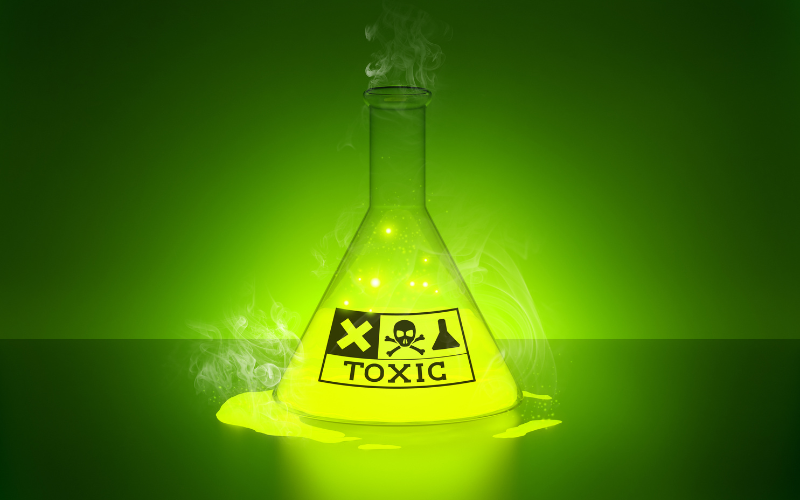Mold toxicity is a serious concern that can impact your health and well-being. Mold is a type of fungus that thrives in damp environments and can be found in homes, offices, and other buildings.
Exposure to mold can lead to a range of health issues, from respiratory problems to allergic reactions. It is important to be aware of the warning signs of mold toxicity so that you can take steps to protect yourself and your loved ones.
In this article, we will explore the ten warning signs of mold toxicity, provide helpful information, and offer guidance on how to address this issue effectively.
10 Warning Signs of Mold Toxicity
Mold toxicity can manifest in various ways, and being able to recognize the warning signs is crucial. Here are the ten common indicators of mold toxicity that you should be aware of:
1. Persistent Coughing
One of the most common symptoms of mold toxicity is a persistent cough that doesn’t seem to go away. If you find yourself coughing frequently, especially in certain environments or rooms, it could be a sign that mold is present and affecting your respiratory system.
2. Allergic Reactions
Experiencing frequent allergic reactions, such as sneezing, itchy eyes, or a runny nose, can indicate mold toxicity. If these symptoms worsen when you are indoors or in specific locations, it is worth investigating whether mold is the underlying cause.
3. Fatigue and Weakness
Feeling constantly tired and lacking energy, even after a full night’s sleep, is another warning sign of mold toxicity. Mold can release toxins into the air, which can affect your overall well-being and lead to persistent fatigue and weakness.
4. Headaches and Migraines
If you frequently suffer from headaches or migraines, mold toxicity might be a contributing factor. Exposure to mold can trigger these painful episodes, especially if you spend a significant amount of time in an environment contaminated with mold.
5. Difficulty Concentrating
Mold toxicity can impair cognitive function and make it challenging to concentrate. If you find yourself struggling to focus or experiencing brain fog, mold exposure could be a possible cause.
6. Respiratory Issues
Respiratory problems, such as shortness of breath, wheezing, or asthma-like symptoms, can be warning signs of mold toxicity. Mold spores can irritate the respiratory system, leading to these uncomfortable and potentially dangerous symptoms.
7. Skin Irritation
Exposure to mold can cause skin irritation, including rashes, itching, or hives. If you notice unexplained skin problems that persist or worsen over time, it is important to consider the possibility of mold toxicity.
8. Sinus Problems
Chronic sinus issues, such as congestion, sinus infections, or post-nasal drip, can indicate mold toxicity. Mold spores can irritate the sinuses, leading to these persistent and bothersome symptoms.
9. Digestive Problems
Mold toxicity can also affect the digestive system, resulting in symptoms such as nausea, diarrhea, or abdominal pain. If you are experiencing ongoing digestive issues without a clear cause, mold exposure should be considered as a potential factor.
10. Mood and Sleep Disorders
Exposure to mold can impact your mental health, leading to mood disorders like depression or anxiety. Additionally, it can disrupt your sleep patterns, causing insomnia or restless nights.
Frequently Asked Questions (FAQs)
Q: Can mold toxic cause long-term health problems?
A: Yes, prolonged exposure to mold can lead to chronic health issues, including respiratory problems and compromised immune function.
Q: How can I test my home for mold?
A: There are professional mold testing services available that can assess the air quality in your home and identify the presence of mold.
Q: What should I do if I suspect mold is toxic?
A: If you suspect mold is toxic, it is essential to consult with a healthcare professional who specializes in environmental medicine or mold-related illnesses.
Q: How can I prevent mold growth in my home?
A: To prevent mold growth, ensure proper ventilation in your home, fix any leaks or water damage promptly, and maintain humidity levels below 50%.
Q: Can mold toxic be treated?
A: Treatment for mold toxic involves removing the source of mold exposure, improving indoor air quality, and supporting the body’s detoxification processes.
Q: Are certain individuals more susceptible to mold toxicities?
A: People with pre-existing respiratory conditions, weakened immune systems, or allergies may be more susceptible to the effects of mold toxicities.
Conclusion
Recognizing the warning signs of mold toxicity is crucial for protecting your health and the well-being of your loved ones. If you experience persistent coughing, allergic reactions, fatigue, headaches, difficulty concentrating, or any other symptoms mentioned in this article, consider the possibility of mold toxicity.
Consult with a healthcare professional who specializes in environmental medicine to address the issue effectively. By taking proactive measures and creating a mold-free environment, you can ensure a healthier living space for yourself and your family.
Read also: Having a Roasted Grams has 10 Advantages

